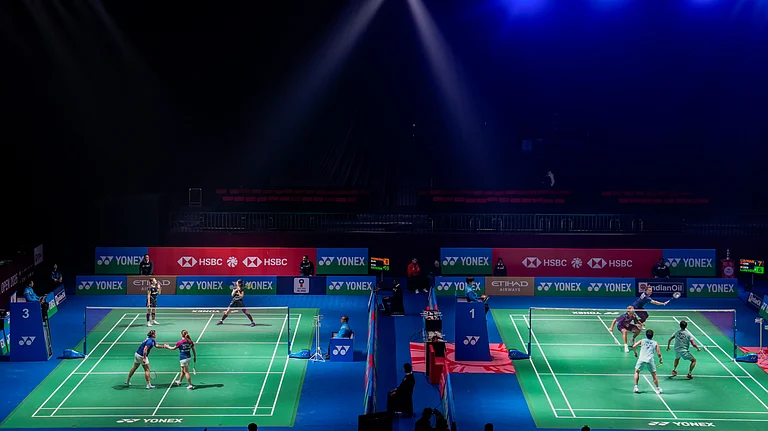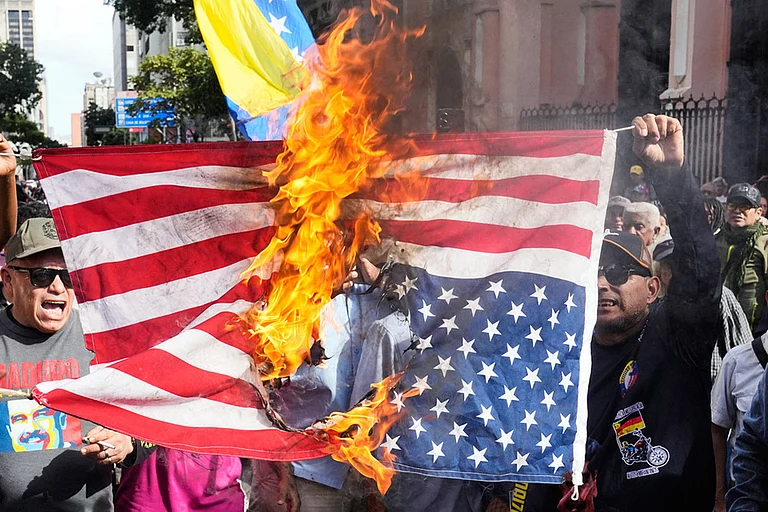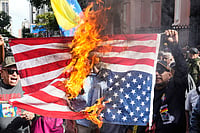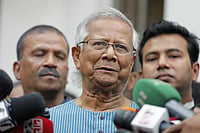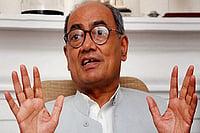Since the arrival of the Bharatiya Janta Party (BJP) in 2014 at the centre, much literature has focused on the nature of its dominance with a majoritarian aspect. Many political theorists and psephologists have called it a one-party dominance, interestingly also drawing its resemblance with the dominance of the Indian National Congress until 1967. Shifting from the dominant approach, ‘Saffron Republic: Hindu Nationalism and State Power in India’, edited by Thomas Blom Hansen and Srirupa Roy, attempts to explain the factors which led to the dominance of BJP more in a ‘nation-state’ sense, where the BJP managed to wipe away the boundaries between civil society, state, and governmental institutions.
Departing from psephologically oriented analysis, the authors trace everyday practices of Hindutva in its four sections of the book namely rule, articulation, inclusion, and violence, and delineate how Hindutva practices have been embedded in the society which has been working as a ‘patronage network’ at all levels of society. Fittingly, the editors argue: “If Hindutva ideologues have been able to capture the levers of power in significant political, cultural, and educational institutions in India, they have done so through established means.”
Analysing various Hindutva think tanks, Roy’s chapter departs from explaining the formation of social and ideological identity on an individual level to an institutional level which led to the homogenisation of various state institutions. This process she calls mainstreaming of governmental Hindutva. Roy argues that, with the help of various right-wing think tanks, this government succeeded in shifting the focus from Hindutva violence to the various right-wing think tank conclaves which enables the process of democratic functioning of institutions but with Hindutva ideology as an integral part of it. The following process of mainstreaming of governmental Hindutva is an attempt to answer a question which the author has posed at the outset of the chapter: “What changes when Hindu Nationalism is the currency of rule and not protest?”
Another void in Hindu Nationalism literature which this book fills with empirical evidence is drawing a resemblance in the working of populist forces outside and in India. Amrita Basu’s chapter has taken this debate of populism in India more aptly by drawing a resemblance with religious nationalism post-2014 and arguing that Hindutva politics succeeded in equating the Hindu identity with the Indian identity. Basu notes:“Modi has spoken of a threat to not merely Hindu identity but also Indian identity, by conflating opposition to the current government’s policies with being anti-Indian and anti-Hindu.”
Highlighting the ‘latent majoritarianism’ which very often led to the ‘latent violence’ in West Bengal, Ritajyoti’s chapter has extended the debate of populism to ‘left populism’ by mapping out the process of cultural othering of ghettos, real estate dynamics, and communal tension. These three dynamics led to the structural relationship between the majoritarian city and its minority ghettos. “It may be argued that the period of Left rule enabled latent majoritarianism by subsuming communal and caste contradictions into class issues. The government could not make the Muslims of the city feel secure about their futures. The spectre of riots continued to loom large among the city’s Muslims. In sum, latent majoritarianism thrived during the Left rule which found a powerful political articulation after Narendra Modi came to power in 2014,” noted Ritajyoti.
Another theme that this book has covered succinctly is the idea of “new Hindutva” and the factors leading to it. Authors have used the term articulation (which they borrowed from Jamaican-British sociologist, Stuart Hall) as the theme of their second section of the book to analyse the factors of new Hindutva, which defines the intermingling of cultural forms and ideological constructs. “New Hindutva advances through a contingent, decentralized, and flexible series of actions and events that are shaped by localized contexts and imperatives and yet (re-)produce a Hindu majoritarian social order,” notes the book.
An interesting chapter by Thomas Blom Hansen explains the articulation of new Hindutva through three different prisms: re-interpretation of history and historical memory; rise of Hindutva in city with the declining significance of historically dominant Muslim population in city and its economy; and social and spatial segregation of Muslims and Hindus. These three as a new Hindutva factor led to what he termed as “communal common sense” in Aurangabad city.
Chapters by Arkotong Longkumer, Suryakant Waghmore, and Lalit Vachani have captured the idea of inclusion in Hindutva politics by situating Hindutva in everyday empirical politics. Arkotong situated Hindutva with various examples of ‘cultural appropriation’ (factor of new Hindutva) like drawing resemblance between indigenous faiths and the larger Hindu cultural and religious universe. Waghmore in his chapter takes the caste system as a new Hindutva factor to create a dichotomy between popular Hinduism and Hindutva. While chapter by Vachani argues that the creation of Muslim Rashtriya Manch (MRM) itself is one of the new Hindutva factors which just use Muslims for a symbolic representation. “Primary goal of the MRM is not to change the consciousness of the Indian Muslim. Instead, the MRM aims to set political agenda and themes for public discussion, and stage scenes and circulate images primarily for consumption by the Hindu nation and the RSS rank and file,” notes the book.
Chapters by Irfan Ahmad, Mona Bhan, and Pravis Ghassem-Fachandi give new perspectives for understanding the violence under the aegis of the new Hindutva. Ahmad’s chapter is primarily set around politics of naming where by using the methodology of Begriffsgechicbte on the Delhi violence (2020) as a case study, he argues how by using the term ‘riot’ instead of ‘pogrom’, the Hindutva government normalise the violence against Muslims and situate both Hindu-Muslim equal responsible for it and to which he termed as ‘ditto theory’. By giving various empirical evidence of Delhi Police's direct involvement in violence against Muslims, he termed Delhi violence as an anti-Muslim pogrom. “The police kicked nine-month-pregnant Parveena in her stomach, beat her with a baton, and insultingly hurled the following: ‘Ye-Lo-Azadi’ (Here, take your freedom; The Patriot 2020),” notes the book.
Bhan’s chapter busts myths around the claims that abrogation of Article 370 will garner foreign direct investments (FDIs) and help Kashmir in securing peace and development. In an encompassing manner, Bhan demonstrates that Kashmir was economically much better than other North-Indian states, thus subtly challenging the Home Minister’s claims of under-development as a rationale for the abrogation of Article 370.
The last chapter of a book by Fachandi opens up new research perspectives in the area of violence by studying the non-Muslims’ post-pogrom reaction towards Muslims. He explores these reactions in the context of what he termed as “guilt”. Interestingly, in his study author find Hindus’ reaction as ‘natural reaction’ which legitimise violence by Hindus on Muslims. At his site in Gujarat, the author came across various wall writings such as “It is an open secret; the Modi government is with us”. This often leads to the general psychological mobilisation of violence.
Overall, the book has successfully captured all the factors which led to the rise of new Hindutva and also opens up a new perspective for understanding Hindutva nationalism post-2014. The book, however, fails to take into account the influence of “one-man personality” as the driving force behind the consciousness of Hindu nationalism. This book is a must-read for scholars interested in the subject of Indian Politics and particularly for those who want to understand changing voting behaviour in Indian politics.
The book ‘Saffron Republic: Hindu Nationalism and State Power in India’, edited by Thomas Blom Hansen and Srirupa Roy, has been published by Cambridge University Press
(Mohd Alfaz Ali is a Doctoral fellow at the Centre for the Study of Social Exclusion and Inclusive Policy, Jamia Millia Islamia. His research interest lies in identity and violence, the question of Secularism and communalism with Hindutva politics as a case study. He Can be contacted at mdalfaz129@gmail.com. Views expressed are personal.)







